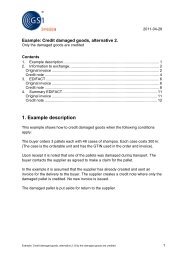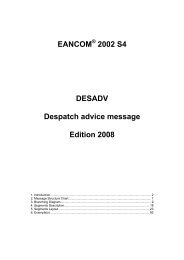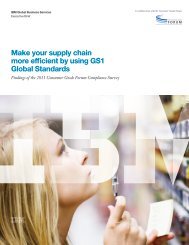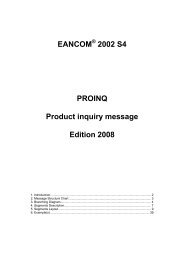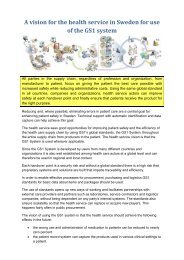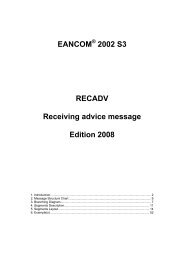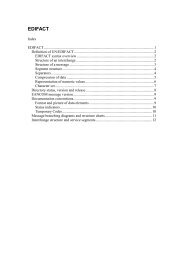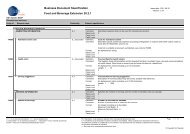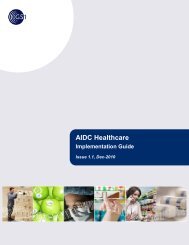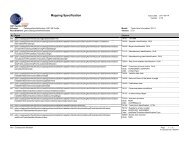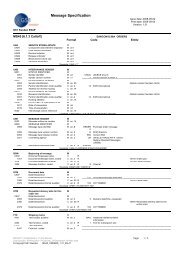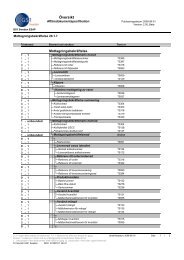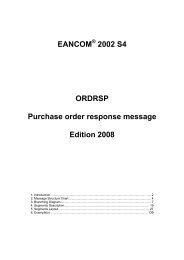TRACEABILITY OF BEEF - GS1
TRACEABILITY OF BEEF - GS1
TRACEABILITY OF BEEF - GS1
Create successful ePaper yourself
Turn your PDF publications into a flip-book with our unique Google optimized e-Paper software.
2 IMPACT <strong>OF</strong> REGULATION (EC) 1760/2000Traceability of beef requires a verifiable method to identify bovine animals, carcassesand cuts in all their packaging and transport/storage configurations at any pointin the supply chain. Unique identification numbers must be applied and recordedaccurately to guarantee a link between each point of processing in the supplychain.The system of identification and registration of bovine animals in the EuropeanUnion is comprised of the following elements 7 :- Ear-tags to identify animals individually;- Computerised databases;- Animal passports;- Individual registers kept on each (farm) holding;The data documenting an animal's history must be included in its passport or ina database.Tracking and Tracing of beef has generated asignificant amount of interest and debate. Itis important to distinguish between the legalrequirements, necessary technologies requiredto implement Tracking and Tracing, and theEAN•UCC System.Legislators establish the legal requirements regarding food safety. The EAN•UCCSystem enables efficient food safety management. However, it is the responsibilityof the trading partners in a supply chain to take advantage of the capabilities thatthe EAN•UCC System provides, to ensure full compliance with Regulation (EC)1760/2000 (here called the “Beef Labelling Regulation”). Recently, the UnitedNations decided to recommend use, officially, of the EAN•UCC System forTracking and Tracing of beef 8 . The European beef supply chain intends toimplement the Beef Labelling Regulation with the help of the EAN•UCC System.‘Tracking’ is the retrieval of the actual status of a shipment, a package etc.Tracking is the ability to follow the path of a specified unit and/or batch of a productdownstream through the supply chain as it moves between trading partners. Productsare tracked routinely for availability, inventory management and logistical purposes. Inthe context of these Guidelines, the focus is on tracking of beef products from theslaughterhouse to retail point of sale.‘Tracing’ is the retrieval of information to reconstruct the history of a shipment, package etcTracing is the ability to identify the origin of a particular unit and/or batch of productlocated within the supply chain by reference to records held by trading partners upstreamin the supply chain. Products are traced for purposes such as product recall and forthe investigation of complaints.In the context of these Guidelines, the focus is on tracing of beef products from retailpoint of sale back to the slaughterhouse. These Guidelines do not trace the movementof live animals between (farm) holdings. Traceability back to the individual animal,including verification of the animal’s countries of birth and fattening is dependent uponthe accuracy of information that is required by the Beef Labelling Regulation.The datais held by the slaughterhouse.7 Regulation (EC) 1760/2000: article 38 Please see the UN/ECE section on meat at http://www.unece.org/trade/agrTraceability of Beef 7>



